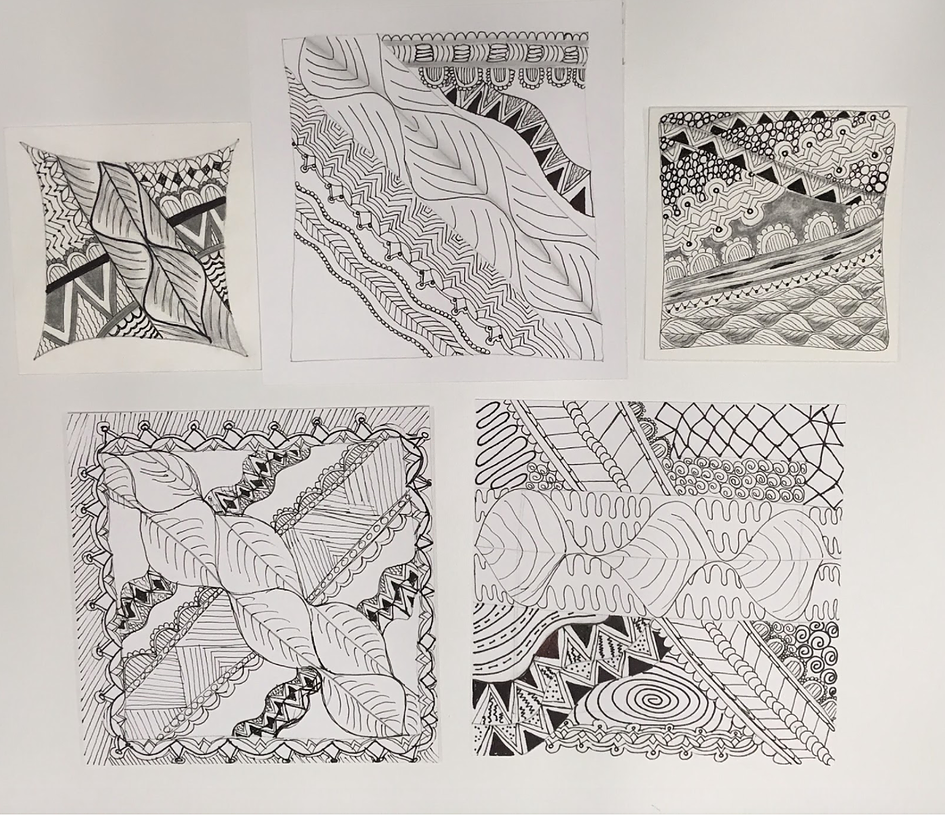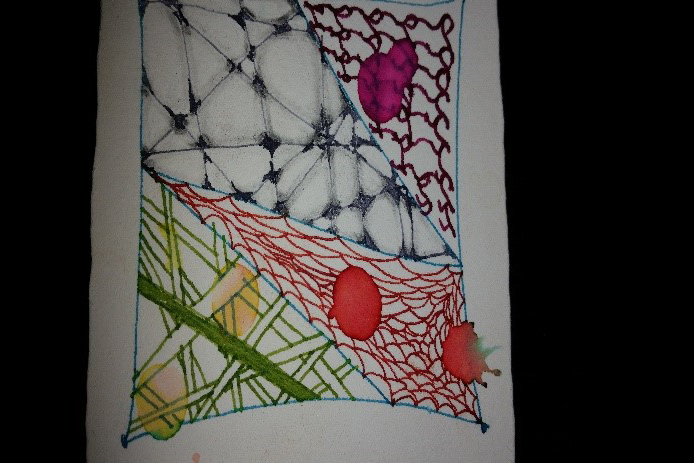At the first University of Arizona College of Medicine – Phoenix retreat, Dr. Cynthia Standley introduced the class of 2021 to the Zentangle® method of art therapy. Advocating for taking time out of busy days of study, work, research, study, lectures, and more studying, Dr. Standley introduced the value of taking time out of our days and reflecting on what the world throws at us. Thinking slowly and using repetitive, planned motions, Zentangles create a form of art that is integrative and builds upon itself to create a simple beauty. I interviewed Dr. Standley to gain a better insight into how she feels art therapy can benefit the medical school community.
Mohammad: What drew you into the world of science and neurology?
Dr. Standley: I was always interested in wearing a white coat but not sure if it would be splattered in paint or lab samples. I studied art and biology as double majors, with a focus on neuroscience, at Wayne State University, Detroit. In graduate school, I focused on the relationship between seizures and pregnancy.
Mohammad: How did you first get acquainted with art therapy in medicine?
Dr. Standley: Art has always been my hobby. Botanical illustration was my start. I did illustrations with The Desert Botanical Garden on Phoenix, and started drawing flowers and seeds. One day, I got an email from a one of the instructors regarding a class on the Zentangle method, so I did what anyone does: I Googled it. I self-taught and reviewed the pen and ink style of this meditative style for a year before I went to a formal class.
In the past year, I got certified as an official Zentangle instructor in Rhode Island! I was never one for moving slow. I could never do something like yoga. However, there is an immersion, a sense of deep relaxation from repeating and drawing the patterns.
Mohammad: What do you think the effects have been in the U of A community?
Dr. Standley: I have found that Zentangles provide a lot of wellness to the staff of the U of A COM. Helps them take a break and learn something new.
Mohammad: Where would you like to see the Zentangle art go in the future?
Dr. Standley: I would love to see it incorporated more into wellness programs. Professional youth, faculty and staff, and students can all benefit from it by engaging the art for a little bit. I believe that Zentangles involve breaking patterns down into simple steps and planning how to use these patterns to create something. I would love to see more medical students get involved in Zentangles, and I am always willing to hand out Zentangle tiles that anyone can use to get started.
Mohammad: What is your favorite Zentangle piece you personally have made?
Dr. Standley: I don’t have an all-time favorite, but I love trying something new. I love learning new ways to apply the Zentangle method, and I will keep trying things as they come to me.
For more information, follow this link!
https://artinmedicine.wixsite.com/art-in-medicine/medi-zen

Picture taken from Art in Medicine website (link above)
Mohammad Khan is a fourth-year medical student in The University of Arizona College of Medicine – Phoenix, Class of 2021. He graduated from Arizona State University in 2014 with two bachelor's degrees in biochemistry and biology. He then worked as a teacher and completed a Master's in biomedical diagnostics in 2017. For fun, Mohammad (who also goes by Mokha) likes to practice at the archery range, work on calligraphy, game, and fountain pen writing, and read science fiction novels. He is interested in medicine with a focus on educating patients.

